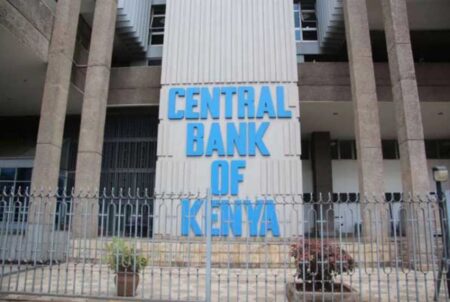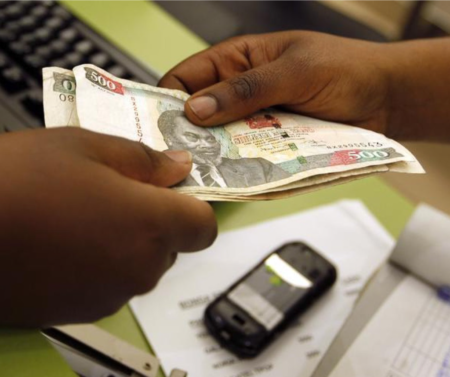- The Just Energy Transition in Africa: Lessons from South Africa and Senegal
- Mukuru Wallet poised to bolster financial inclusion in Zimbabwe
- Tanga port sailing toward becoming Tanzania’s second-busiest cargo terminal
- Tanzania’s roadmap to universal energy access by 2030
- World Bank, WHO, and Unicef in $82M deal to revive healthcare system in wartorn Sudan
- Empowering Africa: Energy leaders gather in Tanzania for key industry summit
- Digital farms: The new frontier for African agriculture
- UAE readies to champion sustainable health during 2025 Local Production Forum
Browsing: Monetary Policy Committee (MPC)
- Remittance inflows for March grew to $407.8 million, up from $385.9 million in February, with the US maintaining its lead as the top source for Kenya’s remittances.
- This was also higher by 14.2 percent compared to the $357.0 million sent in the same month last year (March 2023), according to official data by the Central Bank of Kenya (CBK).
- The cumulative inflows for the 12 months to March 2024 totaled $4.4 billion compared to USD 4 billion in a similar period in 2023, an increase of 10 percent.
Kenyans living and working abroad sent home more money in March, boosting the country’s forex reserves and supporting families and friends.
Remittance inflows for March grew to $407.8 million, up from $385.9 million in February, with the US maintaining its lead as the top source for Kenya’s remittances.
This was also higher by 14.2 per cent compared to the $357.0 million sent …
- The Central Bank of Kenya benchmark rate has gone up to 12.5 per cent from 10.5 per cent.
- Developing economies including Kenya are paying dearly for geopolitical tensions.
- The current US policy rate at 5.25 per cent -5.5 per cent is the highest in 22 years, exerting pressure on economies.
Borrowers in Kenya are facing the prospect of more expensive loans following the country’s central bank’s decision to raise its base lending rate to a near 11-year high of 12.50 per cent. This marks an increase from the 10.50 per cent rate that has been in place since June this year, when it rose from 9.50 per cent due to a rise in non-performing loans in the banking sector.
The hike in rates occurs as Kenya, along with other economies in the region, continues to grapple with the impact of global factors, including elevated interest rates in the United States. …
The loan market in Kenya’s banking sector is going through one of its toughest periods in nearly two decades. With interest rates on the rise and a challenging economic environment, many borrowers—individuals and businesses—are finding it hard to meet their loan obligations.
According to the most recent data from the Central Bank of Kenya (CBK), the proportion of loans that are not being repaid, known as non-performing loans (NPLs), reached 15.0 percent in August 2023, up from 14.2 percent in August 2022. This represents more than $4 billion (Ksh596 billion), the highest it has been in 18 years. The last time Kenya experienced such a high level of loan defaults was back in 2005, when it reached nearly 30 percent.…
Kenya’s private sector and households are grappling with costly credit, a government report now indicates, curtailing key investments by firms and individuals despite a stable financial sector. One of the main criticisms of the credit market in Kenya is that the cost of credit and the interest rate spread by the banking sector is high.
On average, the annual interest rate for the Kenyan banking sector is within a range of 12 per cent to 14 per cent for various categories of loans offered, according to the Kenya Economic Report 2023 by the Kenya Institute for Public Policy Research and Analysis (KIPPRA).…
Ghana finds itself in the classic emerging market trap. This comes from owing too much in someone else’s currency when the global economic tide turns. One ought not to read too much into an emerging economy getting creative with money or to confuse the confiscation of private assets with a more conventional process of fiscal retrenchment that would gain IMF approval. If the plan succeeds, Ghana may have saved itself from an economic meltdown, especially in a period widely considered as economic turmoil, per the World Bank’s analysis of the 2023 economy.…
[elementor-template id="94265"]
Egypt’s annual urban consumer inflation rose to 7.2 per cent in January from 7.1 per cent in December, the Central Agency for Public Mobilisation and Statistics (CAPMAS) said.
From December, it announced that month on month urban headline inflation stood at 0.7 per cent adding that Inflation remains within Egypt’s Central Bank of a target range of 9 per cent, plus or minus 3 percentage points.
The CBE announced that Egypt’s core inflation increased to 2.7% in January from 2.4% in December. Consumer prices decreased to 0.2% in December after decreasing to 0.3% in November.
Also Read: Ethiopia, Egypt, and Sudan set for Blue Nile dam agreement this January
Since August in December 2019, Egypt’s annual consumer price inflation rate recorded its highest rate rising to 7.1 per cent from 3.6 per cent in November.
According to Trading Economics data, prices rebounded for food & non-alcoholic beverages decreased to 1.8 …
The Central Bank of Kenya (CBK) has retained its benchmark lending rate at 9.0 per cent for the sixth straight time since bringing it down in July 30 2018, sparing borrowers higher cost of loans.
The Monetary Policy Committee (MPC) which is CBK’s top decision making organ met on Wednesday to review the country’s macroeconomics.
Chaired by CBK governor Patrick Njoroge, the committee held retained the rates where there have been for almost a year, even as the capping of interest rates continues to affect lending trends by banks.
President Uhuru Kenyatta signed into law a Bill capping bank interest rates at 4 per cent above the Central Bank Benchmark Rate, in August 2016.
With the bench mark rate at 9.0 per cent, banks can only charge interest of up to 13 per cent.
READ ALSO:Why banks in Kenya will lend at a maximum 13%
Why retain
Among the …
In yet another review of the country’s macroeconomics, Kenya’s Central Bank has held the benchmark lending rate at 9 per cent, meaning banks in the country will continue giving loans with a maximum interest rate of 13 per cent.
This is under the Banking Act which caps lending rates at four percentage points above the CBK rate.
The decision was reached on Monday by CBK’s decision making organ-Monetary Policy Committee (MPC), which meets every two months to review the outcome of its previous policy decisions and recent economic developments.
The meeting was held against a backdrop of domestic macroeconomic stability, sustained optimism on the economic growth prospects, improving weather conditions in most parts of the country and increased uncertainties in the global financial markets.
This is the sixth time the MPC is retaining the benchmark rate at nine per cent after bringing it down from 9.5 per cent in July …









